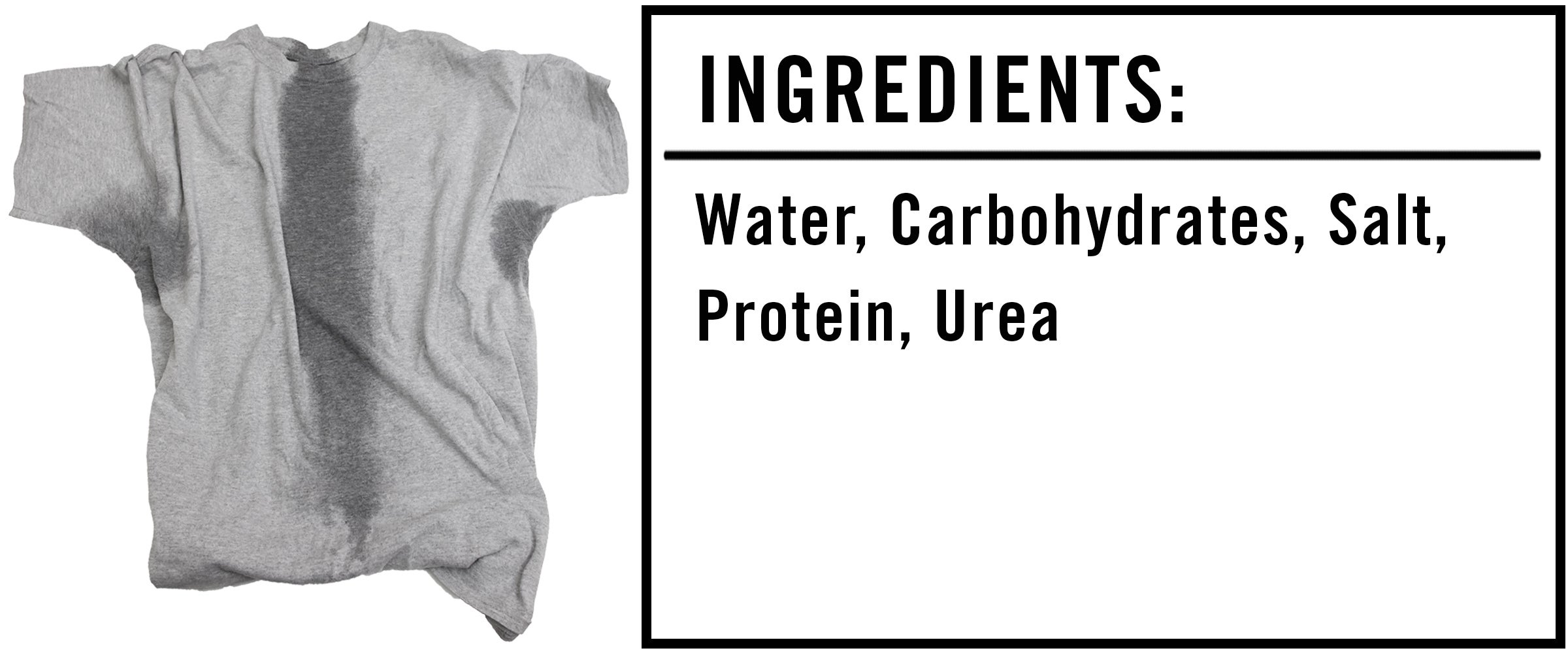 As we enter that magical time of year when your underwear glues itself to your butt with the determination of an affectionate barnacle, we’re taking a closer look at sweat. What is it? What does it want? From sweatshops and anxiety to the literal drippy stuff itself, this week is all about the perspiration. Now let’s get sweaty.
As we enter that magical time of year when your underwear glues itself to your butt with the determination of an affectionate barnacle, we’re taking a closer look at sweat. What is it? What does it want? From sweatshops and anxiety to the literal drippy stuff itself, this week is all about the perspiration. Now let’s get sweaty.
We’re often told that you should never eat anything (or put anything on your body) if you don’t recognize everything on the ingredients list. But since most of us have no idea what xanthan gum or potassium benzoate are — or more importantly, what they’re doing to our bodies — we’re decoding the ingredients in the many things Americans put in (and on, or near) themselves with the help of an expert.
This edition, we’re taking a slightly different tack and examining something that comes out of your body, rather than something you put into it: Namely, sweat, which, as well as being something you definitely wouldn’t want to live without, is composed of five separate ingredients that we’ve broken down in the exact order they appear on the International Hyperhidrosis Society website.
Oh, and one more thing: You’ll notice that “toxins” are nowhere on this ingredients list, and there’s a very good reason for that. Now let’s get started.

The Ingredients
1) Water: Angela Ballard, registered nurse and communications director for the International Hyperhidrosis Society, explains that sweat is 99 percent water, which means the following ingredients add up to only a measly one percent when combined.
2) Carbohydrates: This is essentially just a minuscule amount of leftover waste material from when the carbohydrates you consumed were metabolized. In fact, when fat leaves the body, some turns into water so it can be excreted via urine, feces and sweat.
3) Salt: In the human body, water always follows salt, and sweating takes advantage of this mechanism. Salt is pumped into the sweat glands, which causes water to follow. Then, as the water pressure increases, the mixture is forced toward the surface of the skin as sweat.
A lot of sweating can result in both dehydration and low sodium levels, which can induce lethargy and confusion. So make sure to drink fluids and eat regularly on those particularly sweaty days.
4) Protein: According to one study, there are actually 95 different proteins found in sweat. These proteins help protect the body from pathogens that might attempt to invade through the skin. As the authors explain, “The roles of these highly abundant proteins were reviewed; all of which have protective functions, highlighting the importance of sweat glands in composing the first line of innate immune defense system, and maintaining the epidermal barrier integrity.”
5) Urea: Urea forms when the food we eat is digested into amino acids. Our livers break down those amino acids into ammonia, which is then converted into less toxic urea. From there, this urea is excreted in sweat, blood and urine. Too much urea in the body can be a sign of kidney or liver problems, since those organs are supposed to be dealing with stuff like that.
Again, very little urea is actually found in sweat, so it would be difficult to argue that sweating has a huge impact in that regard. Still, considering how much sweat the human body is able to create — up to 15 liters per day — one study proclaims, “It is tempting to speculate that, with the proper medical oversight, sweat therapies could provide therapeutic benefits to patients with renal disease.”
The Takeaway
Sweat is freaking cool, man! Like, it delivers little warrior proteins to the surface of the skin so they can fight germs and shit. Sweat, you can run down my brow any day.


